From May 31 to June 1, 2025, the second joint event of the IDG Water Network and the Tibetan Center e. V. took place in Hamburg. On the first day, the participants gathered in the temple in Hamburg-Berne, designed in the Tibetan-Buddhist tradition.

Under the title “The Power of Water – The Power of Mind”, we explored how external and internal forces interact—in nature as well as in our thinking, feeling, and actions. The program alternated between impulses from water research and Buddhist practice. Water was viewed not only as a vital resource but also as a carrier of meaning, emotion, and connectedness. On the second day, a Buddhist water blessing was held at the Hamburg-City location and the nearby Kuhmühlenteich, making the central importance of water and its connection to all living beings tangible and forming the spiritual conclusion of the event.
Power of Water – Power of Mind
Participants were first confronted by Prof. Michael Bach with the destructive power of water, such as extreme floods in the Ahr Valley. At the same time, it became clear how life-giving water is—as a source of energy, food, and connection between ecosystems.
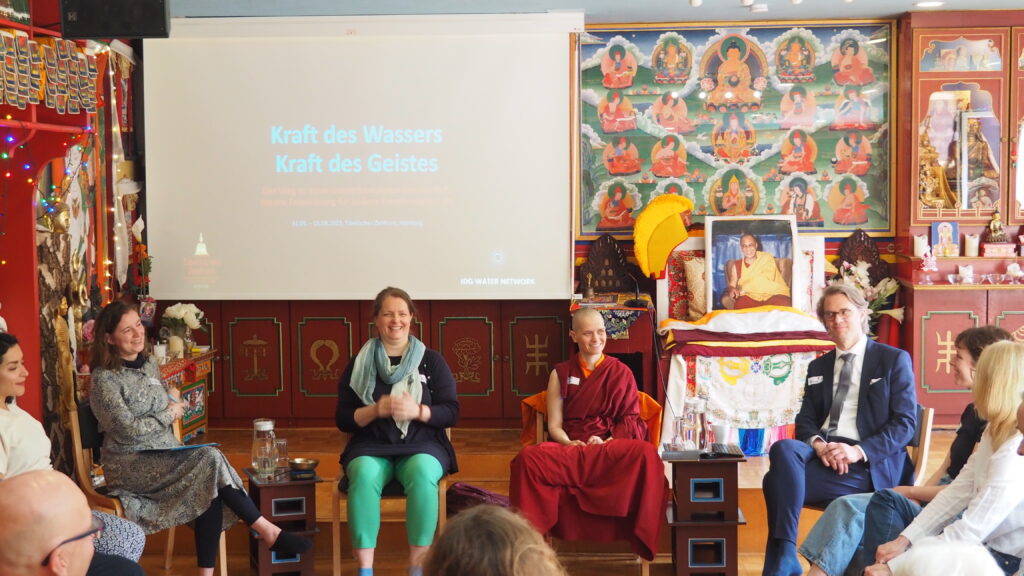
Elisabeth Steinbrückner illustrated the power of the mind and pointed to a fascinating level of connection to water through the “stream of consciousness”: in Buddhist teaching, we flow with our mind—on a long path of development toward the positive.
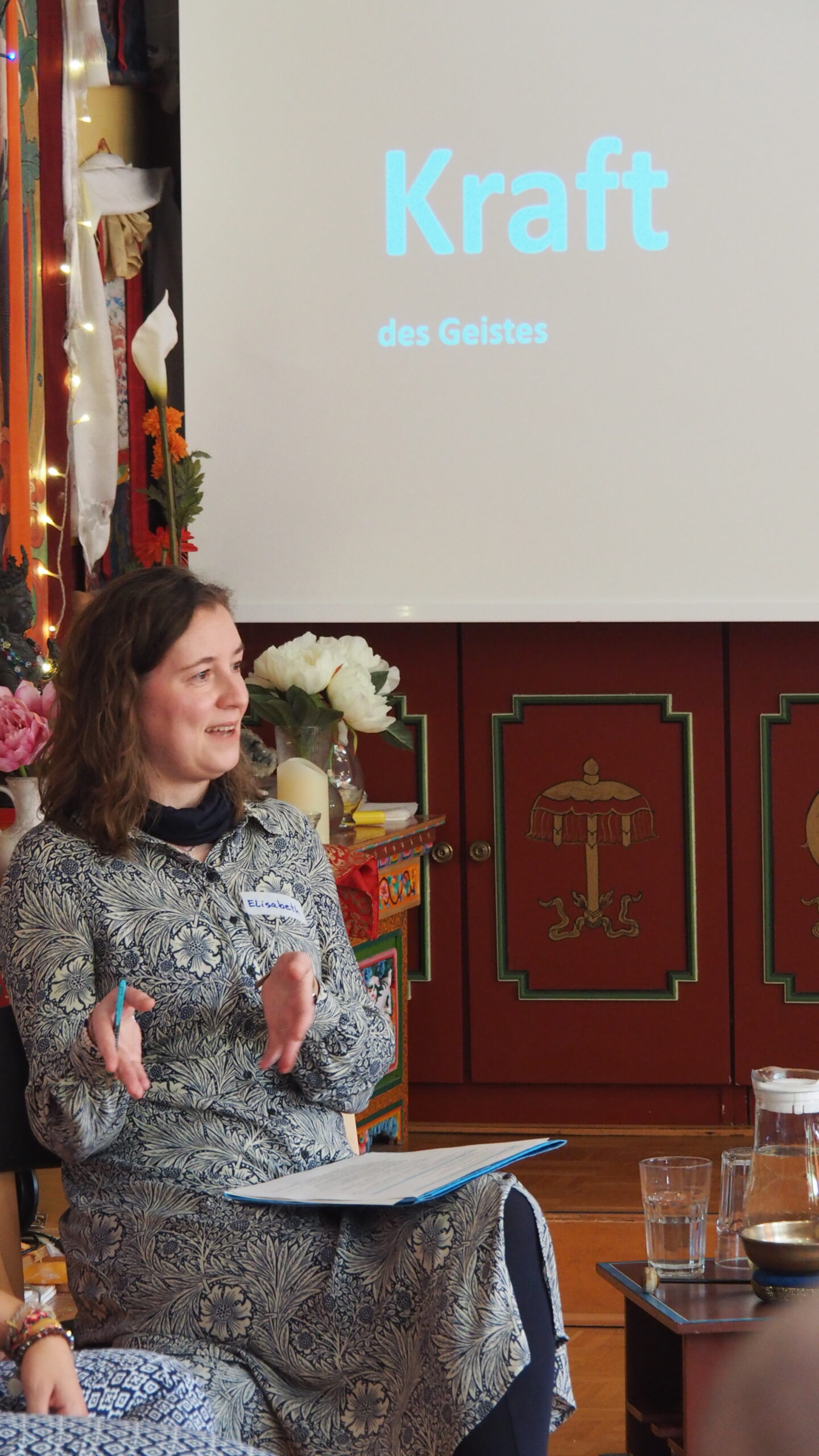
It became clear that the human mind, like the element water, carries within it the potential to heal or to destroy. Just as water can shape landscapes, our mind has the power to shape reality—triggered by our thoughts, moving into words and actions. Guided meditations invited participants to reflect:
What is my mind? How can I control it? Am I afraid of its power?
Restoration Outside – and Inside
Using examples of successful river restoration projects, Prof. Michael Bach showed how committed collaboration and community action at the local level can bring streams and rivers back to life—with ecological, cultural, and emotional effects. Venerable Thubten Jampa drew the parallel to the “restoration of the mind”: mindfulness, meditation, and self-reflection can help bring clarity to one’s own mind—comparable to a river that, after decades of straightening, flows freely again.
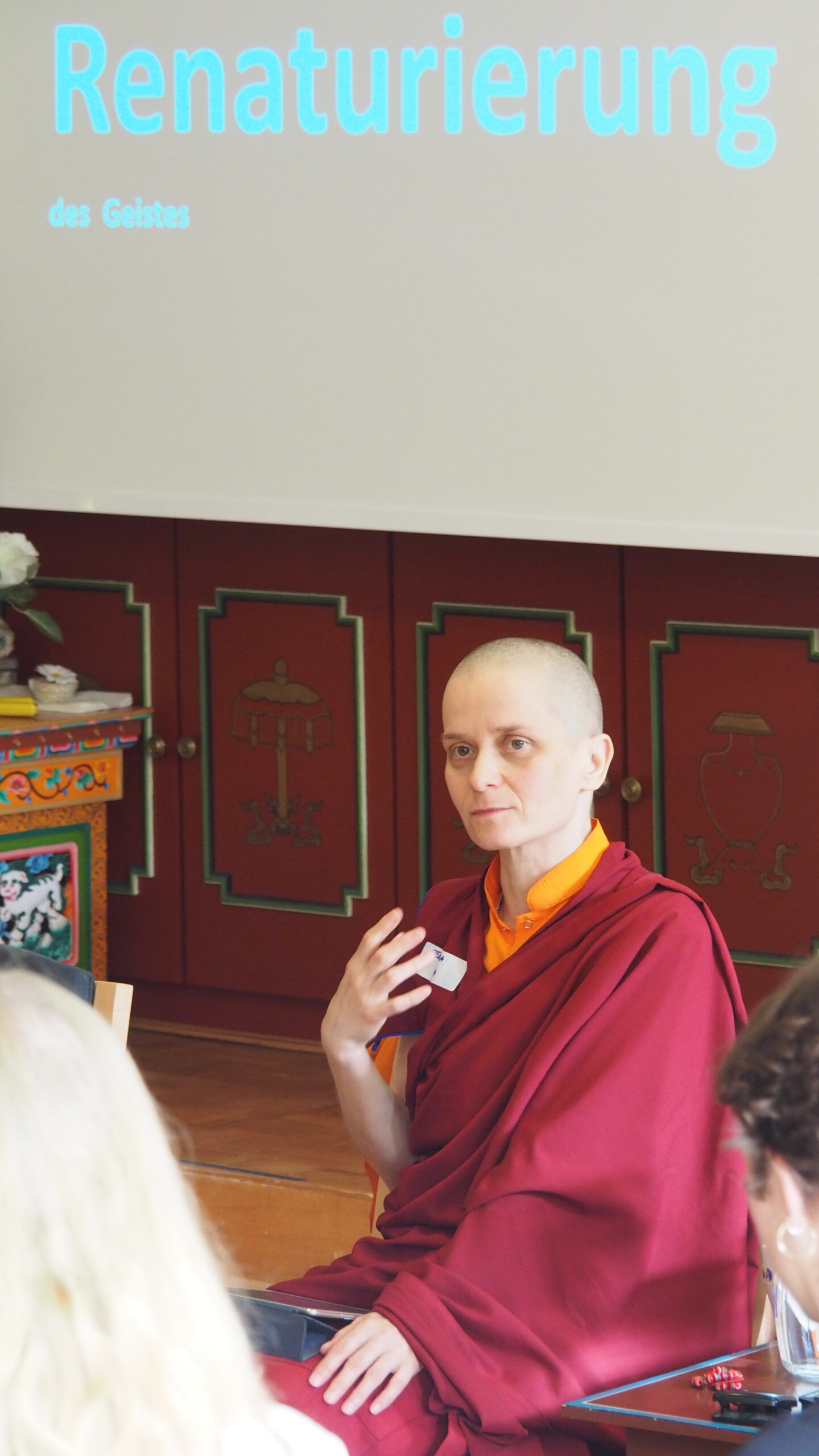
The guided meditation on clarity, emptiness, and the origin of the mind provided a particularly moving moment of stillness:
What does it mean to restore oneself? How does a thought arise? When is the mind clear, and how can this clarity be cultivated and maintained?
Beacons and Visions
A third focus addressed beacons and visions. Prof. Bach presented inspiring and encouraging projects such as the revitalization of the Emscher or the protection of the Vjosa in Albania, now Europe’s first Wild River National Park.
At first, these projects seemed hopeless or unattainable, but they became reality once awareness formed within society.
We just need to want it!
This message linked back to the power of water and the mind, highlighting their deep connection.
The Tibetan Center presented people as beacons who provide orientation through their attitude and commitment, offering impulses for mindful, water-conscious living via personal video messages. Lucas Buchholz gave an impressive account of the relationship of the indigenous Kogi people of Colombia to water, which they view as a counterpart.
Venerable Thubten Chodron, in her video message, spoke about the offering of water, the interconnectedness of ecosystems, and the consequences that can arise when economic or selfish interests exploit natural resources.
Reflecting Together — Shaping Together
Short “whisper groups” created space for personal reflection and quiet conversation with a neighbor—discussions that had a deep effect. It became clear how strongly personal experiences with water are anchored in everyday observations, feelings of gratitude, and also concerns about the future.
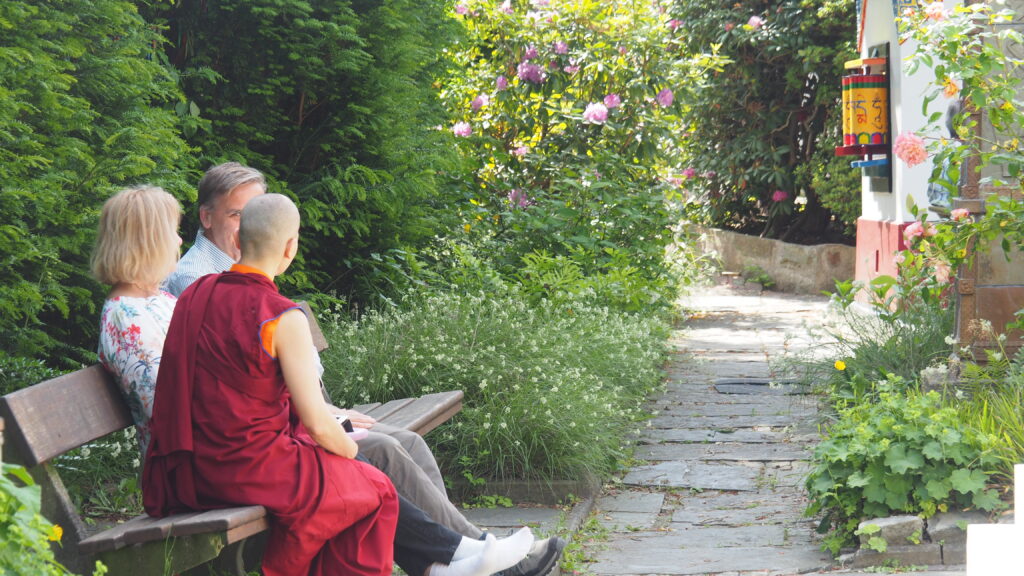
Between program sessions, Heike Schmick provided tea, coffee, and a shared meal. In the garden, this offered opportunities for exchange and pause. Breaks opened space for encounters, conversations, and mindful togetherness.
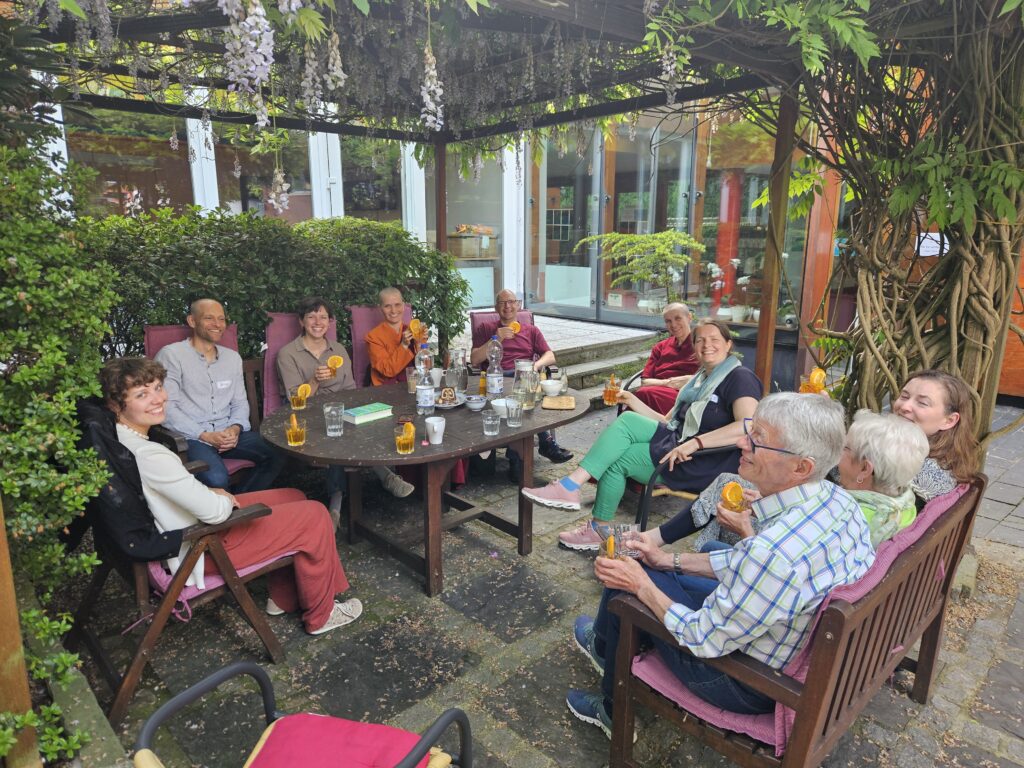
A key focus of the afternoon was small-group dialogue, where participants reflected on their own relationship with water and discussed questions such as:
How much do I take water for granted? How can I express my appreciation in daily life?
Responses revealed that we are often too distant and disconnected from the origin, treatment, and aftercare of water as our life basis. Participants noted that water’s preciousness becomes most tangible in moments, such as taking a sip of cool water when hot and thirsty. Such experiences invite daily remembrance of water’s value—by mindfully considering where it comes from, how old the groundwater is that we drink so naturally, and the journey it has taken. Each participant formulated a personal wish emerging from the shared reflections, something to take home.
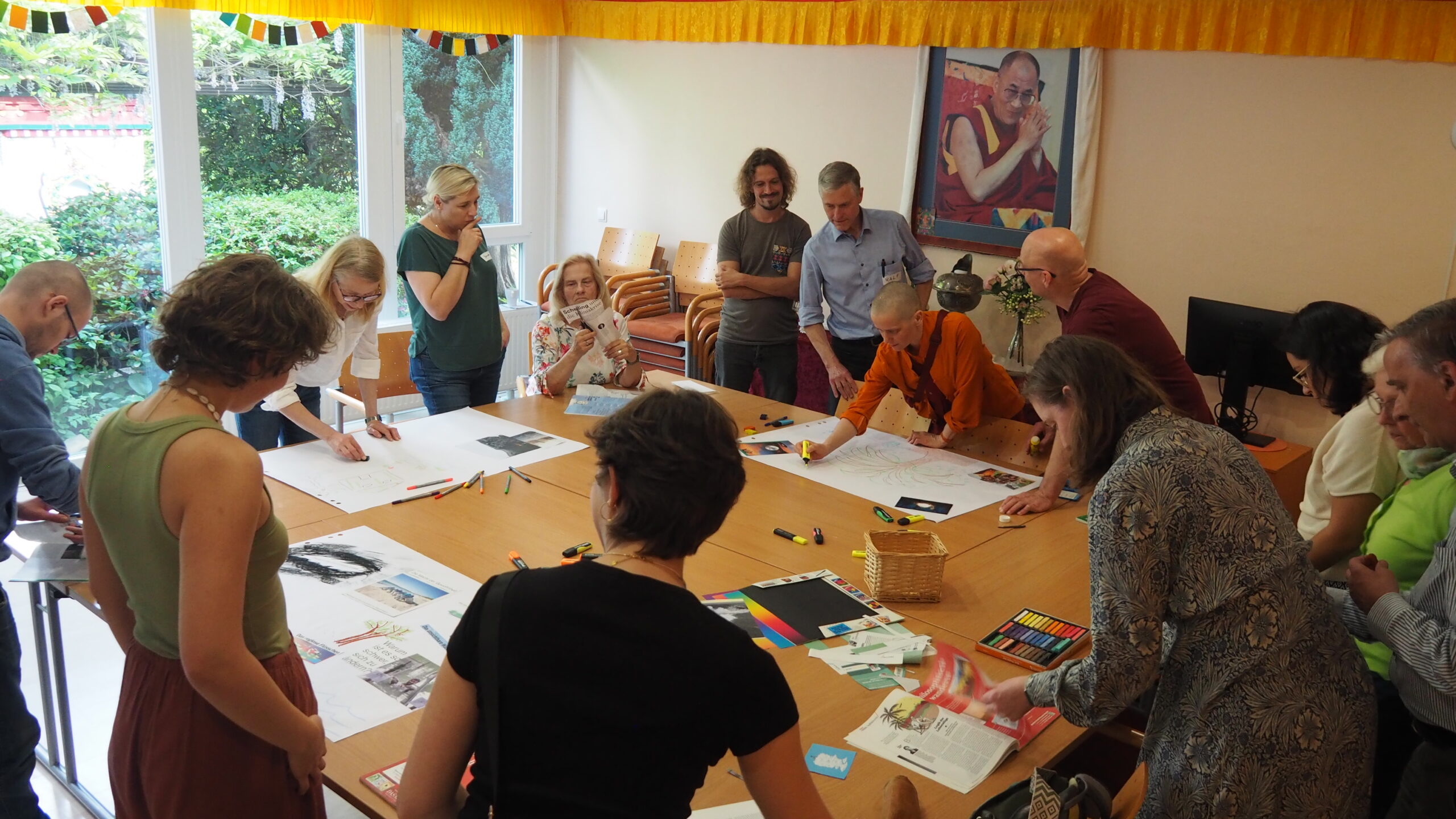
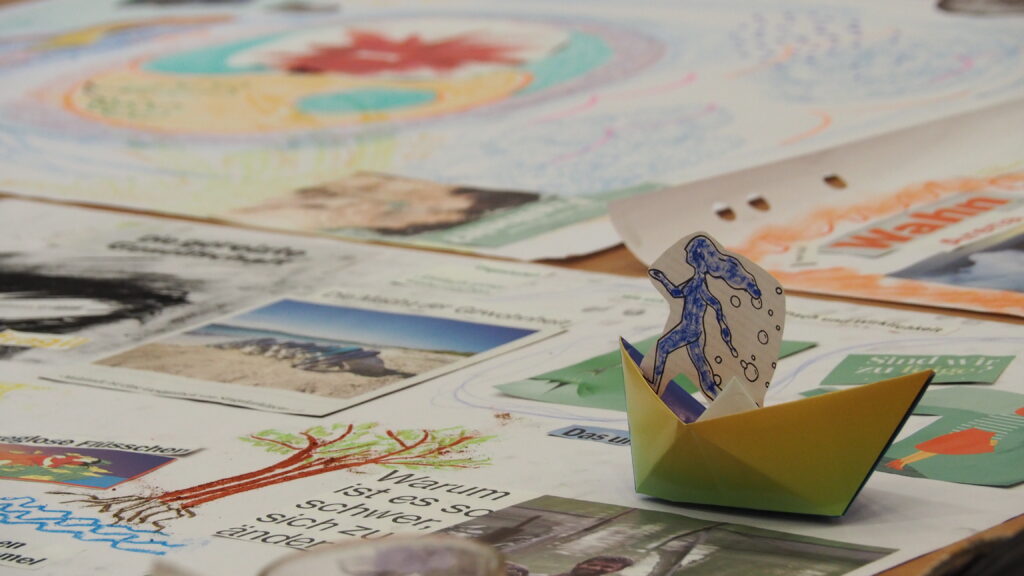
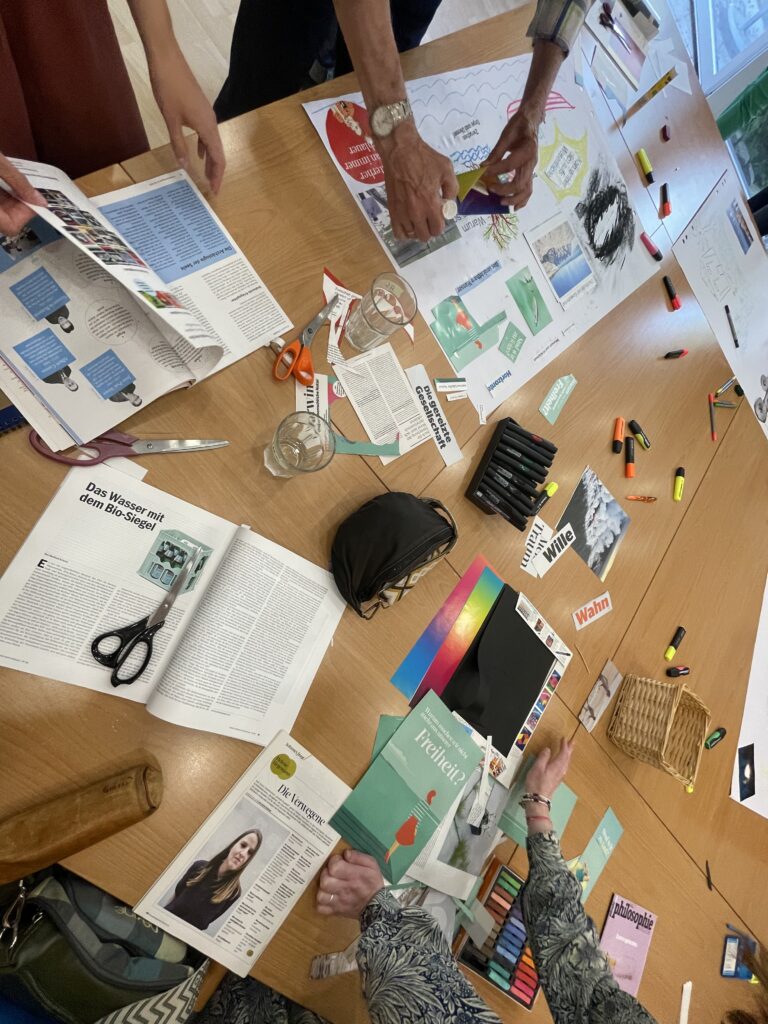
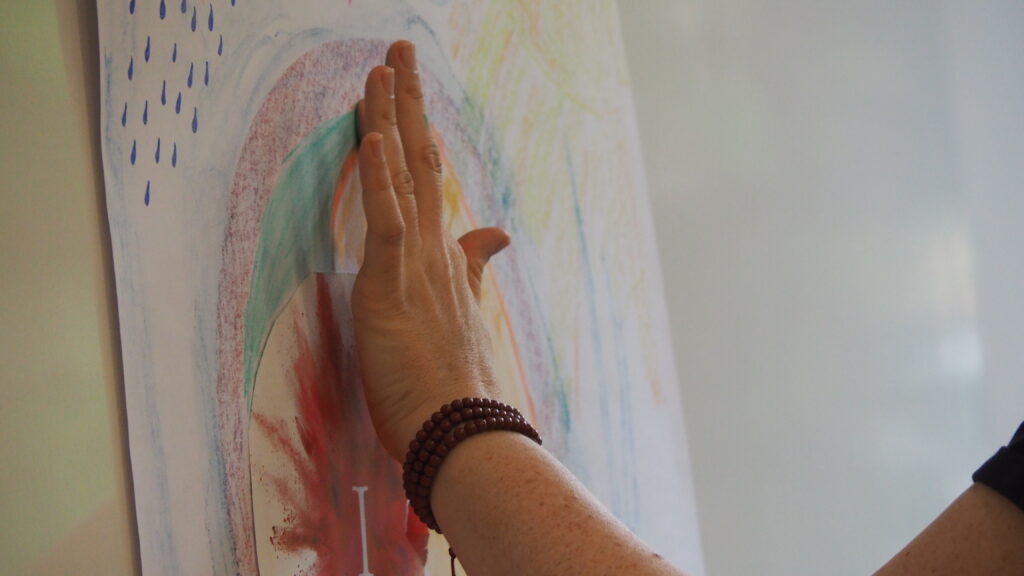
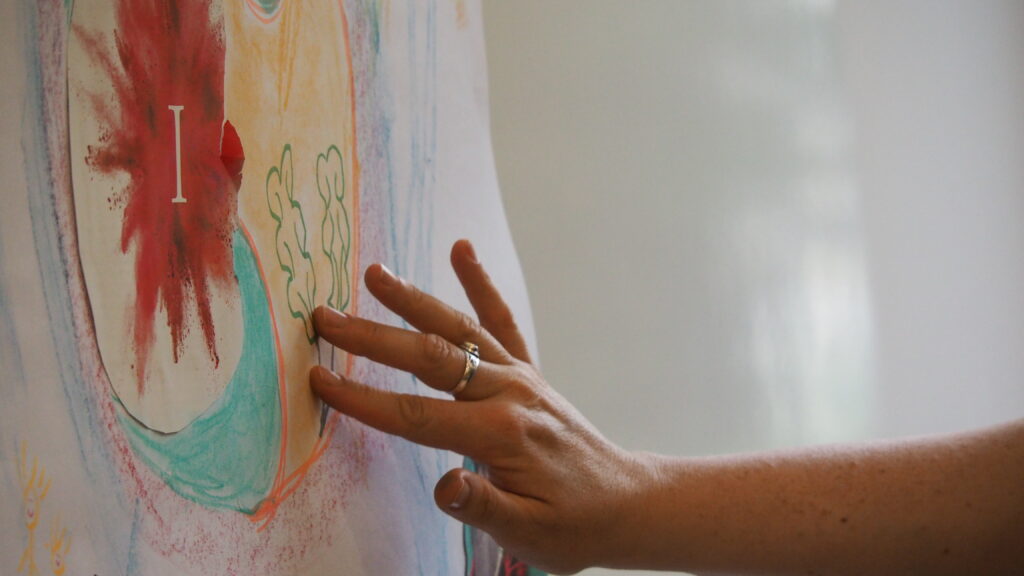
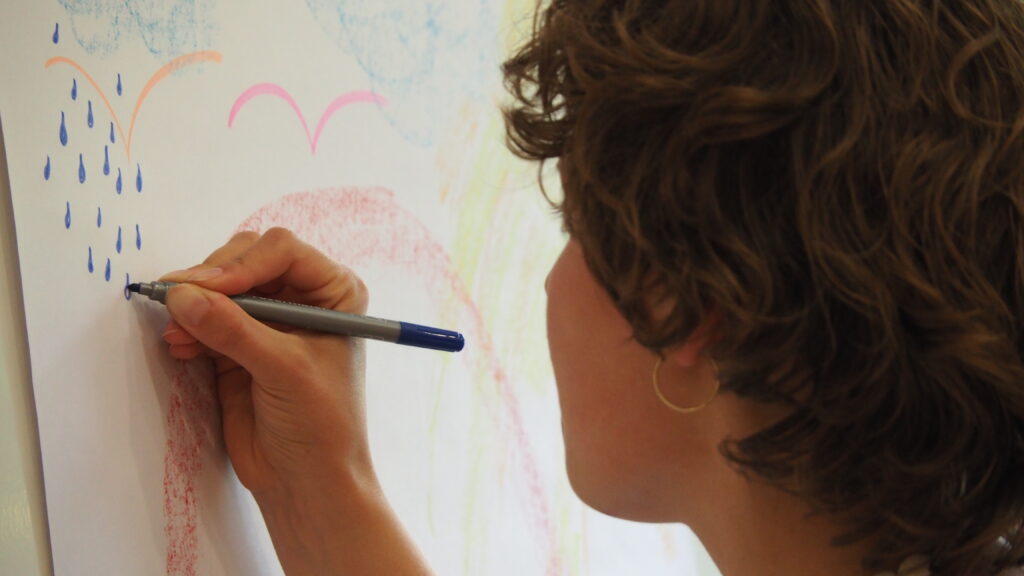
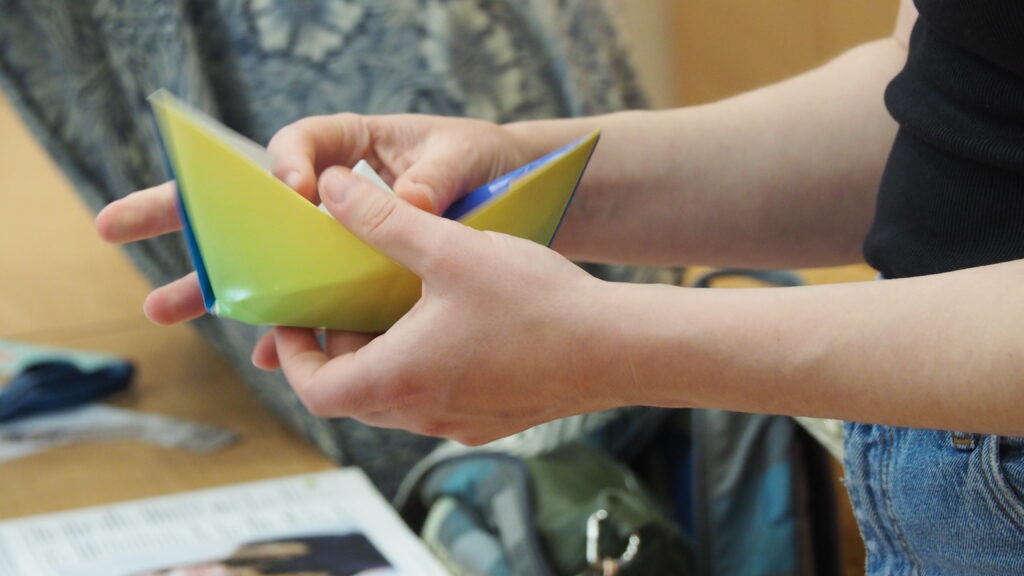
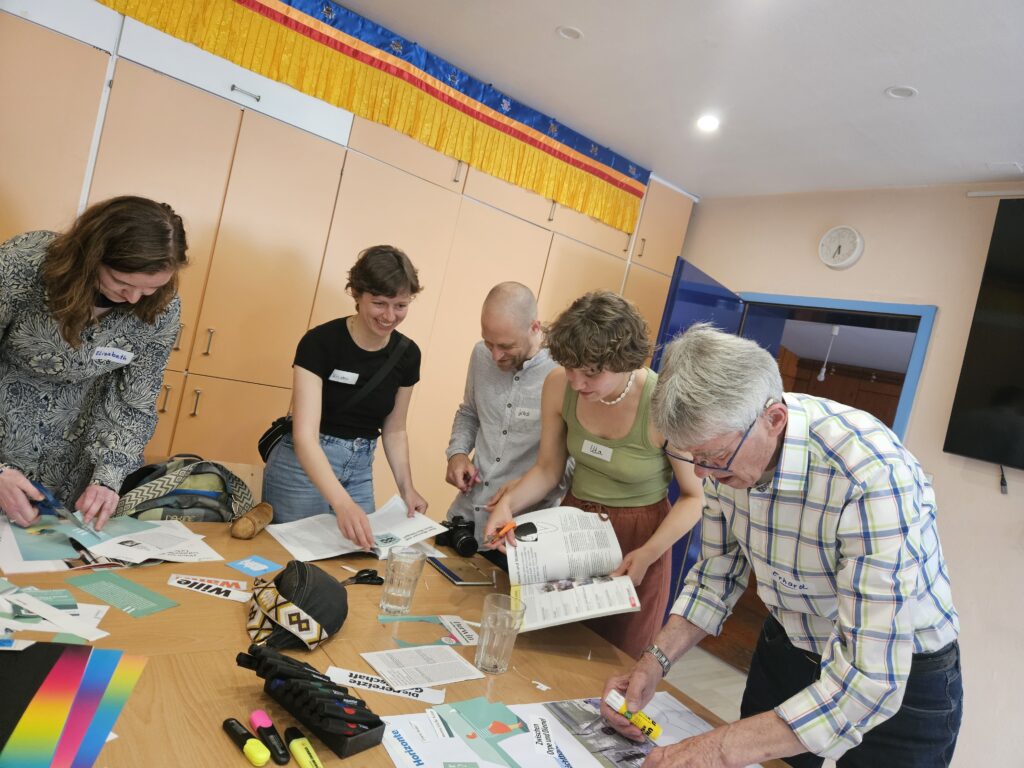
The day closed with the collective creation of “Vision Boards”—a multi-voiced visual representation of emotions and associations with water. Through images, colors, and words, participants artistically expressed what had been felt, thought, and spoken throughout the day.

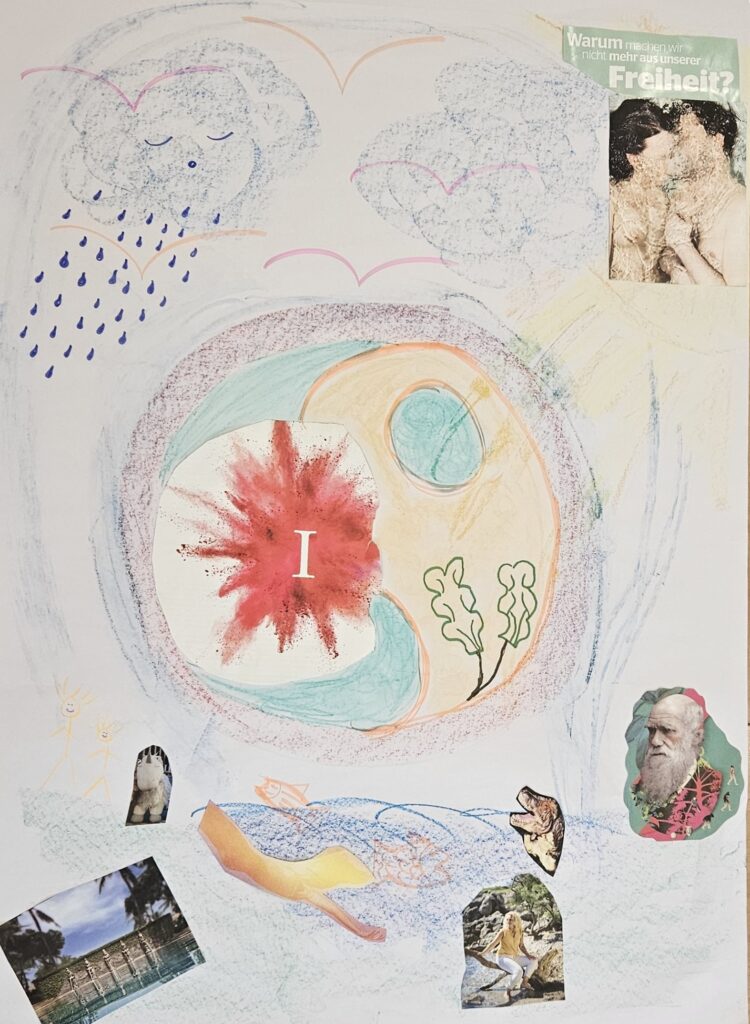
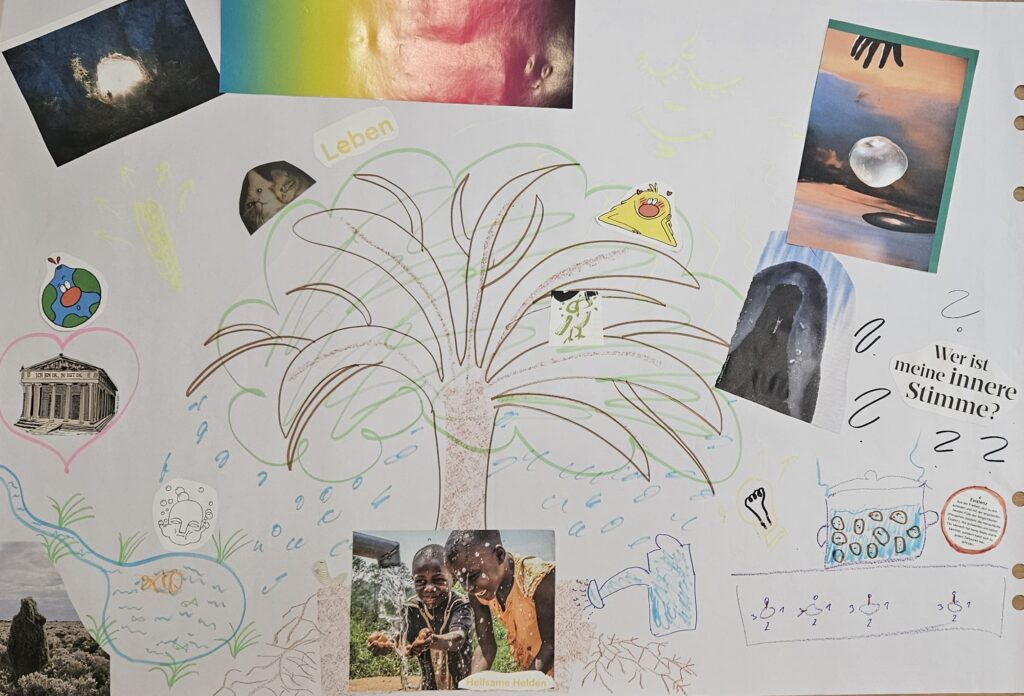
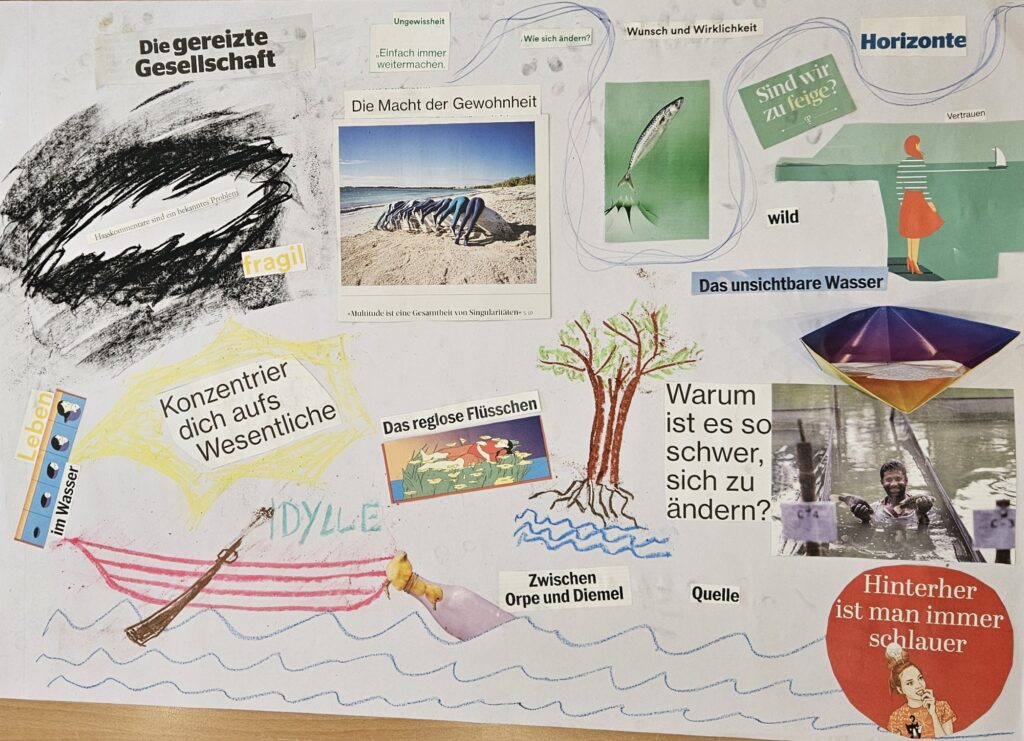
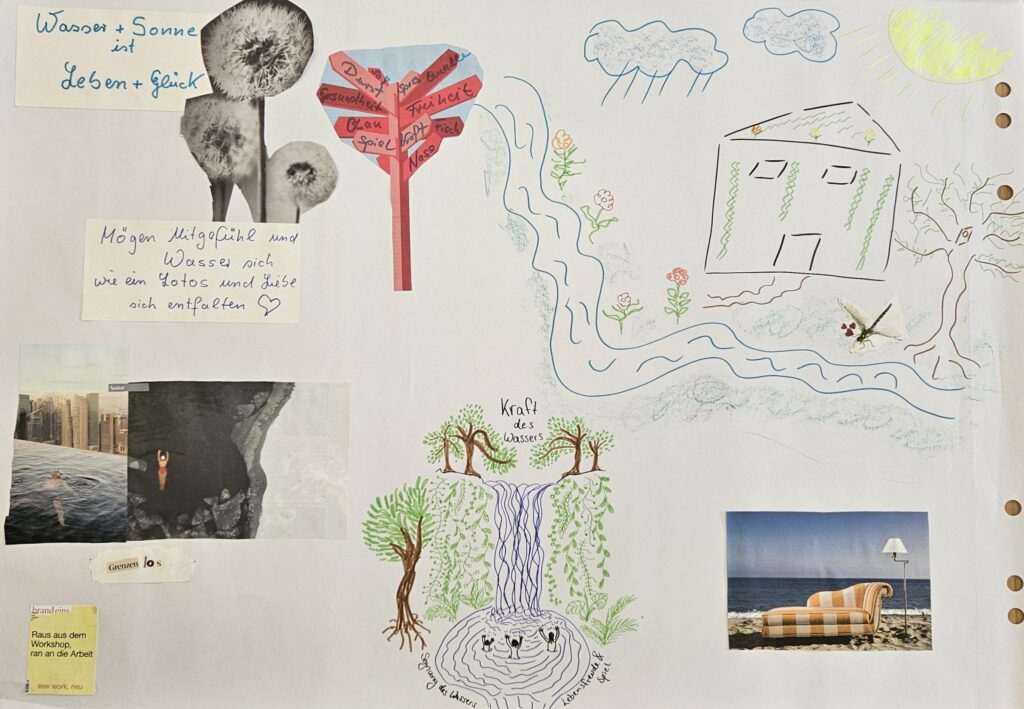
Water Blessing
On Sunday morning, Venerable Thubten Jampa conducted a Buddhist water blessing—following a ritual of Lama Zopa Rinpoche—both at the Tibetan Center in Hamburg and at the Kuhmühlenteich.
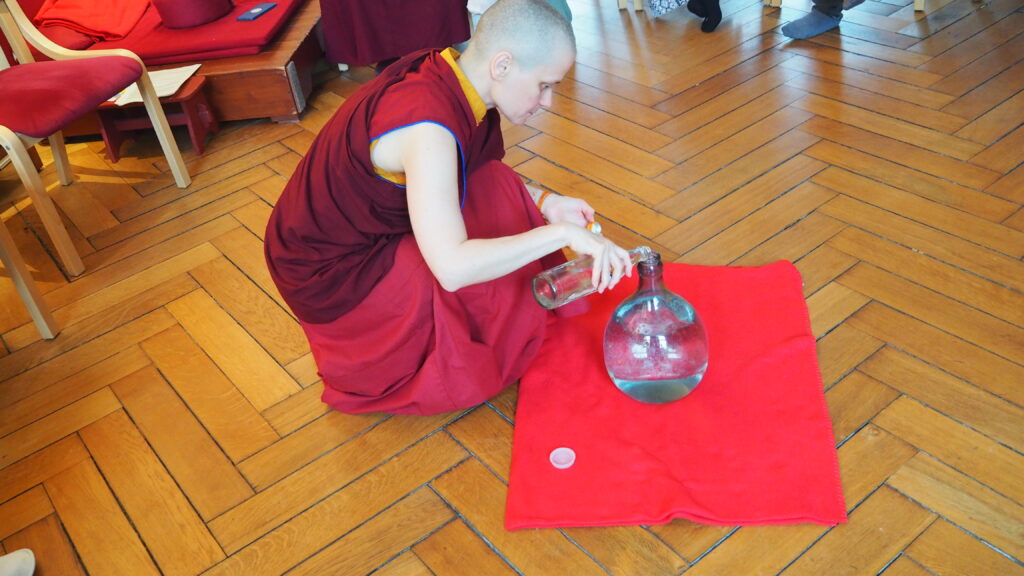
The ceremony expressed gratitude, respect, and connectedness with water. Water was not portrayed as a mere resource at our disposal but as a living bearer of connection, transformation, and life force.
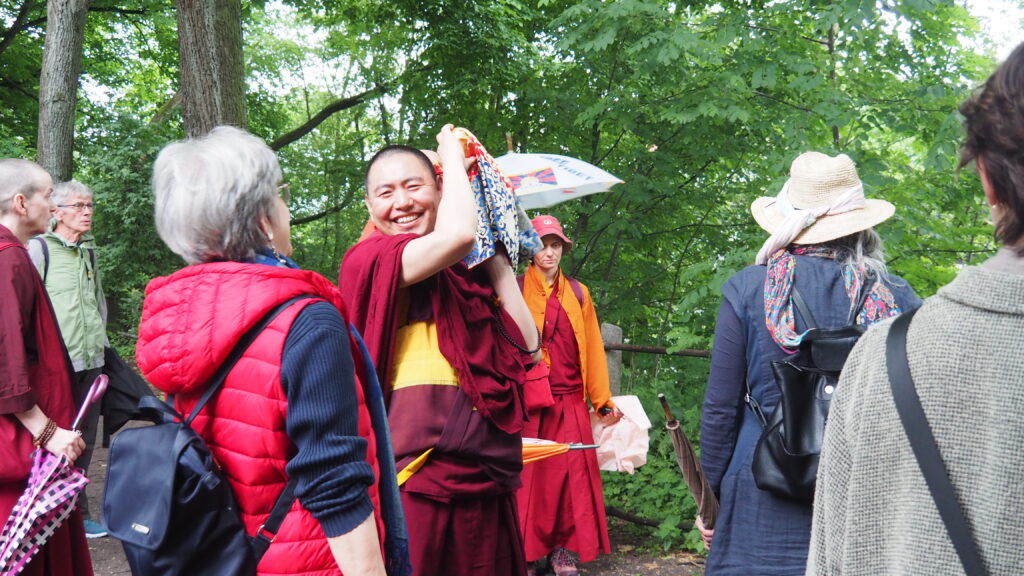
The motivation: every being—like every molecule of water—is a source of past, present, and future happiness. Especially in a time when aquatic ecosystems worldwide are under pressure, such a ritual gesture can be more than symbolic. It reminds us that protection is achieved not only through technology and management but also through a deeper awareness of the human–nature relationship. Scientific strategies for river restoration and safeguarding water quality gain strength when carried by empathy, mindfulness, and an inner compass—values embodied and fostered by Buddhist practice. Many participants filled small vessels with blessed water to take home as a reminder.
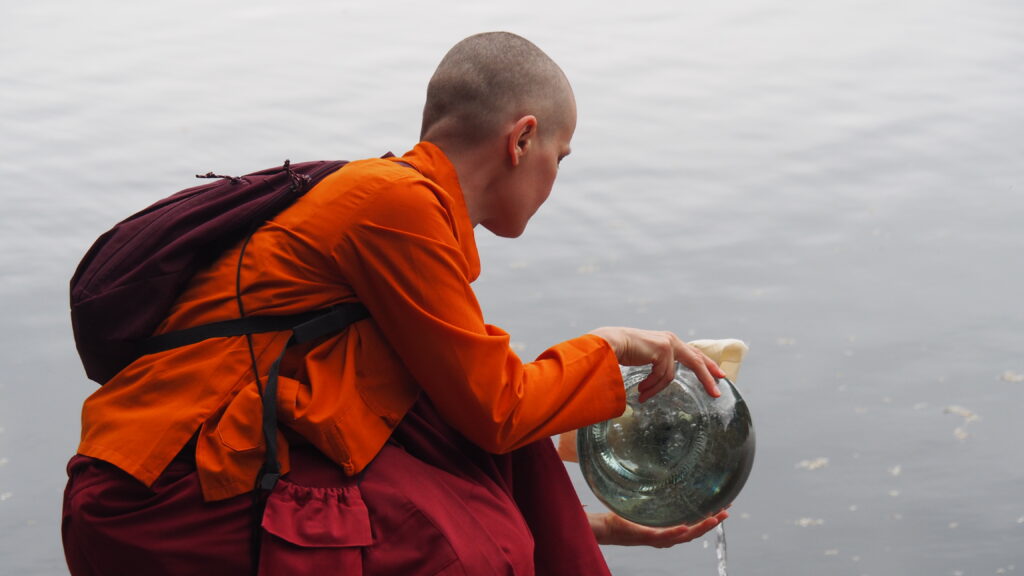
Through the interplay of reflection, dialogue, meditation, and concrete visions, it became clear how powerful the combination of external transformation and inner development can be.
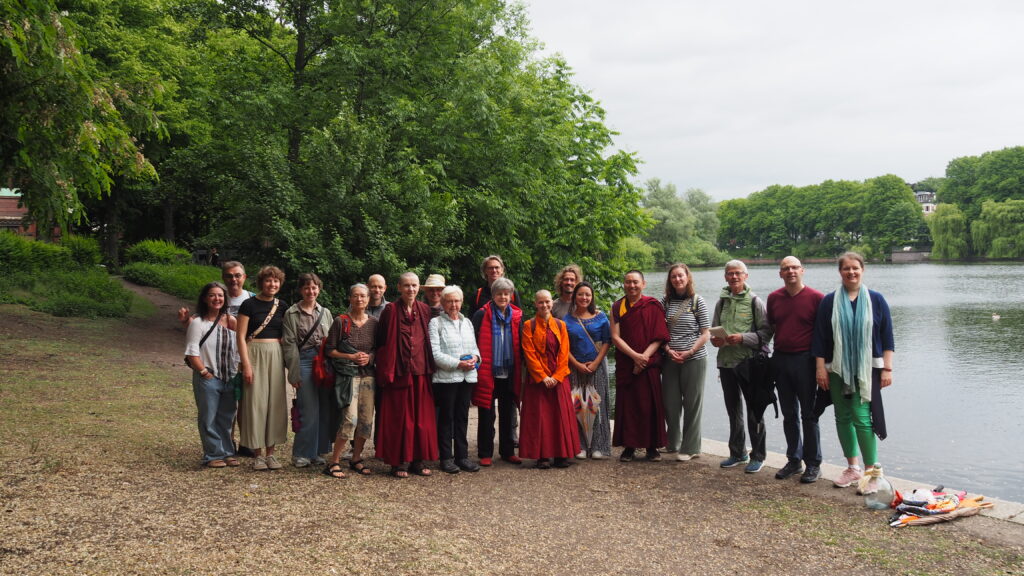
With the positive resonance once again, a continuation of the series is already being considered for next year.

